In July of this year we shall celebrate the 50th anniversary of the first time human beings set foot on the Moon. July 21st 1969 is a milestone in human history and so to commemorate the event Science and Science Fiction will publish a series of posts, one each month detailing significant incidents in the Space Race that ended with Neil Armstrong stepping off the ladder of the Lunar Module and making the first footprints in the Moon’s dust.
For this first installment I’ve decided to discuss the launching of the world’s first artificial satellites, the Soviet Union’s Sputnik and the American Explorer. It was the launching of these two space probes that not only triggered the space race but set the pattern of how the first half of the race would develop.
It all started with the International Geophysical Year or IGY. What’s the IGY you ask? Well in 1956 the cold war between east and west had quieted down a little bit, enough that scientists in the soviet bloc were allowed to attend scientific conferences and actually talk to western scientists. To try to strengthen this period of cooperation it was decided that during the period from July 1st 1957 to December 31st 1958, you’ll notice that’s actually a year and a half, scientists across the world would work together to study the planet Earth. The subjects that would be covered included the aurora, cosmic rays, the planet’s magnetic field, meteorology, oceanography and seismology. As a part of the IGY the United States announced that it would attempt to launch the first artificial satellite into Earth orbit.
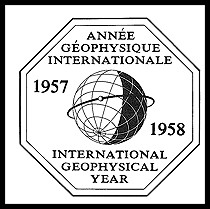
The Soviet Union beat them to it, launching Sputnik, which means fellow traveler, on October 4th 1957. The Soviet’s chief rocket engineer, Sergei Korolev had succeeded in developing the first Intercontinental Ballistic Missile (ICBM), a monster rocket called the R-7. The R-7 was much larger than anything the Americans had and gave the Russians a huge initial advantage. In fact the R-7 is still the basic design of the rocket the Russians use today to launch their Soyuz manned spacecraft.
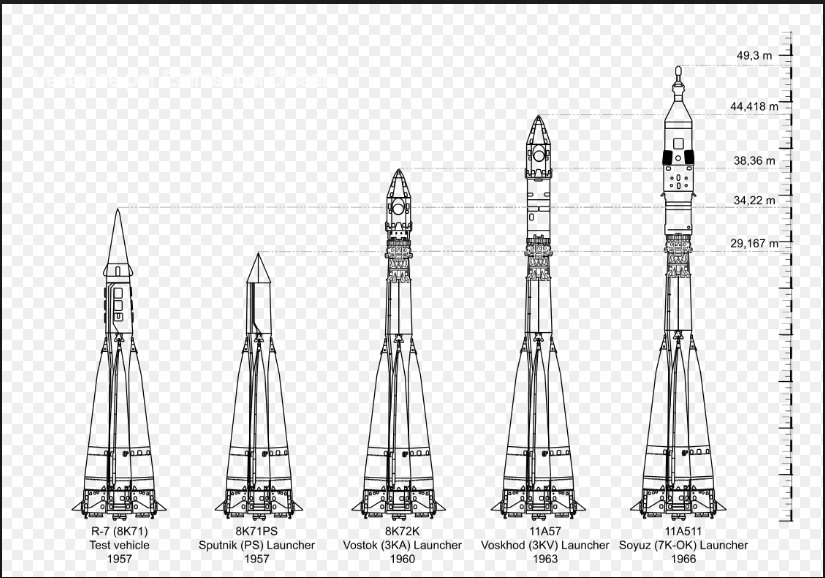
Sputnik itself was a very simple satellite, a sphere 58cm in diameter with a mass of 83.6 kg. Sputnik carried no scientific instruments of any kind but only a radio transmitter broadcasting on 20 Mega-Hertz (MHz) and 40MHz. This allowed it to be picked up by radio amateurs around the world as it circled the Earth every 98 minutes. Sputnik completed some 1400 orbits before January 4th 1958 before it reentered the atmosphere and burned up.

Now the US intelligence agencies, i.e. the CIA, were aware that the USSR was working on large rockets so they were surprised but not shocked by Sputnik. President Eisenhower in particular was unimpressed. The American public however was thrown into a panic to think that the Soviet’s were ahead of them, that the Russians had rockets that could reach US soil.
Following Sputnik the US effort to place a satellite in orbit started to receive a lot more press coverage, a trend that would continue right up to the Moon Landing. What had been a scientific experiment now become America’s effort to show that they weren’t behind.
The satellite America intended to launch was called Vanguard and would have been a much more sophisticated. The Vanguard satellite would be powered by solar cells and in addition to a radio transmitter it carried a temperature sensitive crystal to perform measurements in out space. The Vanguard program had been chosen over the US Army’s competing Explorer program mainly because the rocket that would launch it was a civilian designed sounding rocket not intended for military use.
Unlike the Russians, who only announced a launch after it was a success, there was live TV coverage for the launch of Vanguard on December 6th 1957. The rocket rose only a few meters before the engine cut off and the whole thing came crashing back to Earth in an enormous fireball. Watching the explosion the panic within the US public really took off.
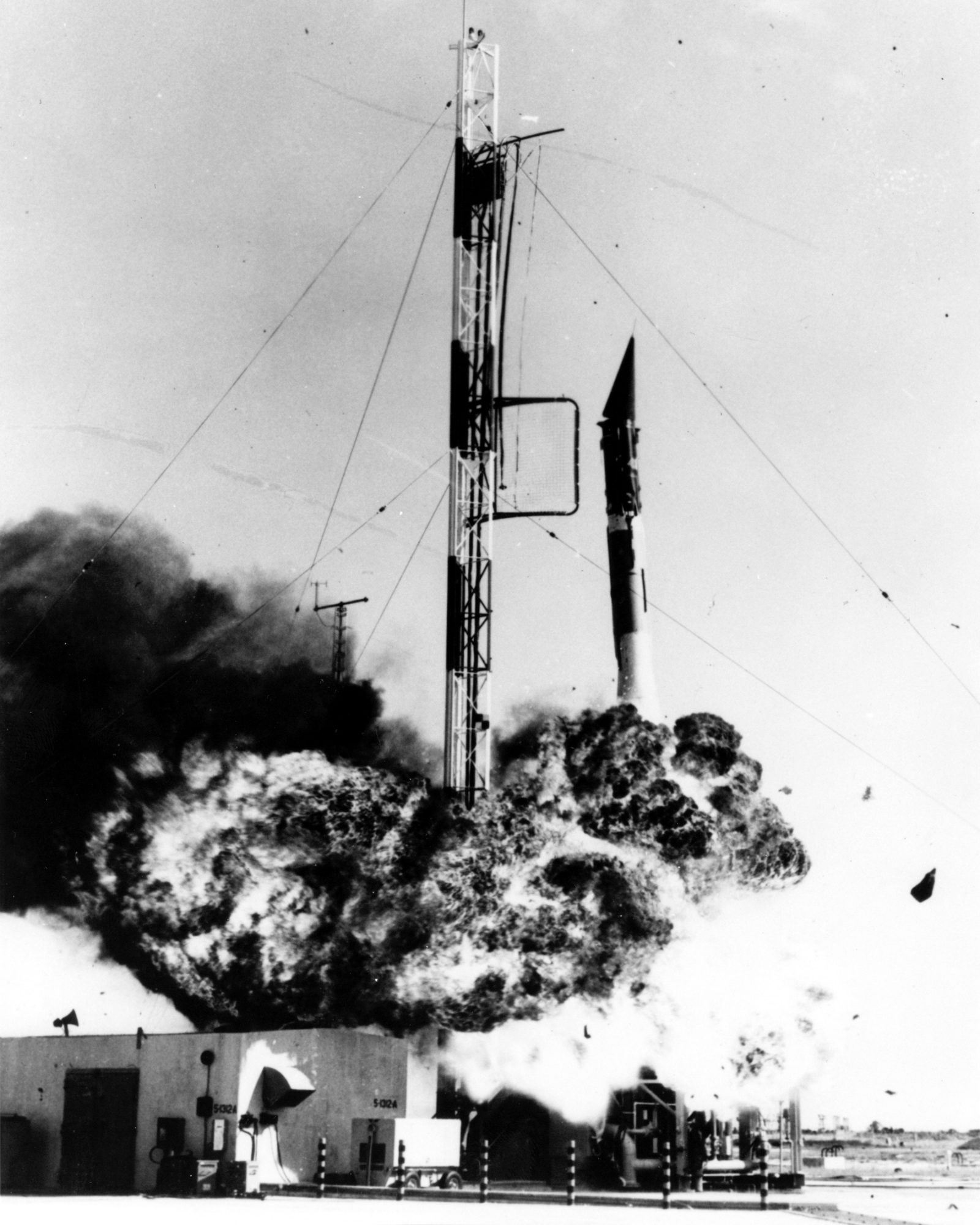
Meanwhile the Russians had launched Sputnik 2, with a live animal on board, a little stray dog from the streets of Moscow which was given the name Laika. According to Soviet press at the time Laika lived for a week in space. It wasn’t until the collapse of the USSR that the truth came out. Sputnik 2’s cooling system immediately malfunctioned and Laika had died within a half an hour of launch. Still, the second Sputnik only increased America’s feeling of impotence.

With the failure of Vanguard the US Army was quickly told to go forward with Explorer. This decision pleased Werner von Braun, the German rocket engineer who had developed the V-2 rocket. Coming to America after the war von Braun had worked for the US Army developing the Jupiter Intermediate Range Ballistic Missile (IRBM) from the V-2 design. von Braun had actually been ready to launch a satellite for several years but political considerations had caused the US to proceed with Vanguard.
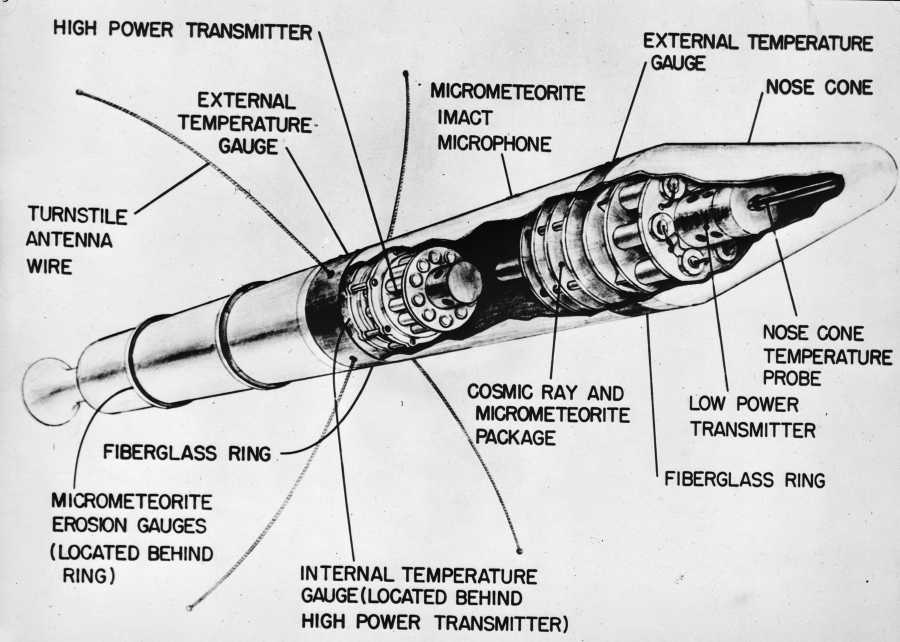
The satellite for the Explorer program had been developed by Doctor James van Allen at the Jet Propulsion Laboratory (JPL) and consisted of a cylinder 205 cm in length by a little over 15 cm in diameter with a mass of 14 kg. Despite being smaller and less massive than Sputnik, Explorer was loaded with instruments including a radiation detector, five temperature sensors and two micrometeorite detectors. The reason Explorer was able to cram more science into a smaller volume than Sputnik was that it employed a brand new technology, 29 Germanium transistors made up a large part of the satellite’s electronic circuitry. The data from the instruments aboard Explorer were then relayed to Earth by a radio operating on 108 MHz.
Explorer was launched on the 31st of January in 1958 to the relief of the American people. It was the instruments onboard Explorer 1 that made the first actual discovery of the new space age as Doctor van Allen used the measurements of the radiation detector to recognize that there was a cloud of radiation surrounding the Earth. Later it was realized that there were several such bands of radiation which were christened the van Allen belts.
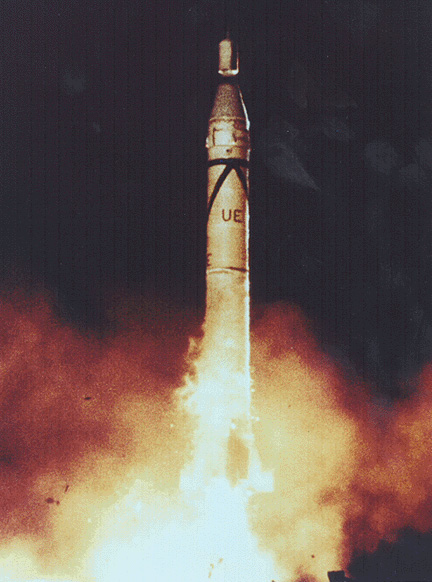
As I mentioned above the launch of both Sputnik and Explorer set a pattern that lasted throughout the first half of the space race. During the period 1957 to 1964 the Soviets scored a number of firsts in space but they never announced their missions until they were successfully launched. Their failures, which did occur, were simply never mentioned.
The Americans always seemed to be playing catch up and their failures were on display for the entire world to witness. Nevertheless the Americans always seemed to be able to do more with less, launching smaller satellites that made more discoveries.
The space race was on, at the moment it didn’t even have a finish line but it did have two very determined contestants.
